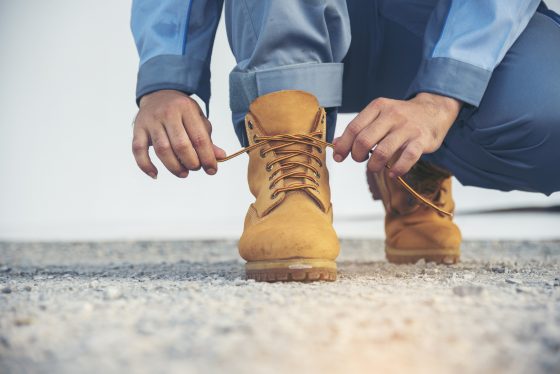Boots are important for protecting your feet from hazards in your workplace. They require regular inspection, just like any other type of PPE.

Photo credit: istock.com/howtogoto
Recently I read an article in OHS Canada about when to replace workboots. To find out more about workboots, I contacted Theresa O’Hara, an occupational health and safety officer with WorkSafeBC who works with the construction industry.
She told me that “Construction workers are working in environments that already have inherent hazards, so any support for their feet during those work activities would be of benefit in lowering the risk of injury.” Safety boots are designed to prevent crush injuries, sprains, punctures, and lacerations. Obviously, different worksites call for different types of workboots and PPE. But regardless of your industry, it’s important to follow manufacturers’ instructions. In Canada, workers need boots that are CSA-certified.
“You want to have a boot that’s going to give you as much protection as possible, and good support for your arch, because otherwise you can end up with joint pain, lower back pain, and other things that can be pretty tiresome.” Theresa says.
Get the most from your safety boots
If you slip, boots can also make the difference between whether you get an extreme sprain or not. Be sure to choose boots that fit you well, as boots that don’t fit properly can actually contribute to tripping.
In terms of wear and tear, she says, “The manufacturer will have some specific instructions about the integrity of the safety components. For example, look at steel toe caps. If damaged boots expose that cap, or if the cap has been dented, or something was dropped on it and caused the cap to bend, the boot may need to be replaced.”
Another thing to check for is wear to the sole. “Generally speaking, any damage to the boot sole, such as soles coming loose, creates a trip hazard.”
Selecting the right boots
The OHS article (mentioned above) lists the following factors to keep in mind when choosing new boots: slip resistance, toe selection, the unique needs of your job, and the right fit. And here’s more advice on Foot Comfort and Safety at Work from the Canadian Centre for Occupational Health and Safety:
- The inner side of the shoe must be straight from the heel to the end of the big toe.
- The shoe must grip the heel firmly.
- The forepart must allow freedom of movement for the toes.
- The shoe must have a fastening across the instep to prevent the foot from slipping when walking.
- The heel should be not more than 60 mm (about 2.5 inches), and the heel should not be lower than the ball of the foot. (From CSA Z195:14 Protective footwear)
Low-income or unemployed individuals looking for work in the Lower Mainland may be able to get safety boots, as well as other industry-appropriate clothing, from an organization called Working Gear. The organization also takes donations.
Thank you to Theresa for speaking with me.


